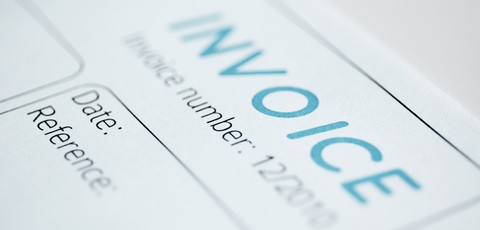If you’re running a limited company, there are certain details you must include on your invoices by law and others which should be included. Your aim is to provide accurate information which fully describes what services are included, and concise company details to ensure that you get paid correctly, and on time. Writing an invoice can be straightforward, once you understand all the details that will need to be featured.

The details a business must include on an invoice depending on the business structure they use (sole trader/partnership or limited company), and whether or not they are registered for VAT.
Details you should include on a limited company invoice
- You must include the word ‘Invoice’ on the document.
- Invoice number – this must be unique, and if you are VAT-registered, it must also be sequential.
- Your company name/business name.
- Your company’s registered address.
- You may also need to add your company’s registration number (on your certificate of incorporation from Companies House).
- Further contact details – such as phone number(s), email, social media.
- Client’s name and address.
- Reference numbers – either a client reference or Purchase Order number (often required by accounts departments to facilitate swift payment).
- A concise description of the services you are invoicing for.
- Include the price per unit (this could be a unit of time if you are a contractor), and a number of units you are billing for.
- Include the time period the invoice relates to if providing services, or the date any products were supplied to the client.
- Provide the total sum owed, net of the VAT.
- Include the VAT payable (the standard rate is 20%) – assuming your company is VAT-registered.
- Provide the total amount which the client/customer should pay (including VAT if applicable).
- If you are VAT registered, print your VAT Registration Number on the invoice.
- Include your company’s bank details if you accept electronic payment (account number and sort code).
Further issues to consider
To minimise the chance of payment being delayed, you should always ask new clients for a contact name, email and phone number for the accounts department. By including accurate details, including any payment reference numbers on the invoice, you are more likely to be paid promptly.
Although many small companies may be unwilling to do so, you are perfectly entitled to charge interest on late payments, courtesy of the Late Payments of Commercial Debts (Interest) Act 1998 at 8% above the Bank of England’s prevailing bank rate. You should state your payment terms on your invoice. If they are not stated, the Legislation assumes that a 30 day payment period is ‘reasonable’.
As with other aspects of running a small limited company, it is in your best interests to project a professional image of your company – both in person and in print and on the web. Take time to design a good-looking invoice template, or ask a designer to create one for you (including a company logo).
Most modern accounting software products now provide online invoice functionality, which can save a great deal of time, and integrate seamlessly with your company’s accounting records – making it easy to reconcile data later on and see which invoices remain unpaid.
Limited company invoice template
You can download a free invoice template for contractors/freelancers via ContractorUK.
More on limited company accountants and limited company tax.


Follow Company Bug